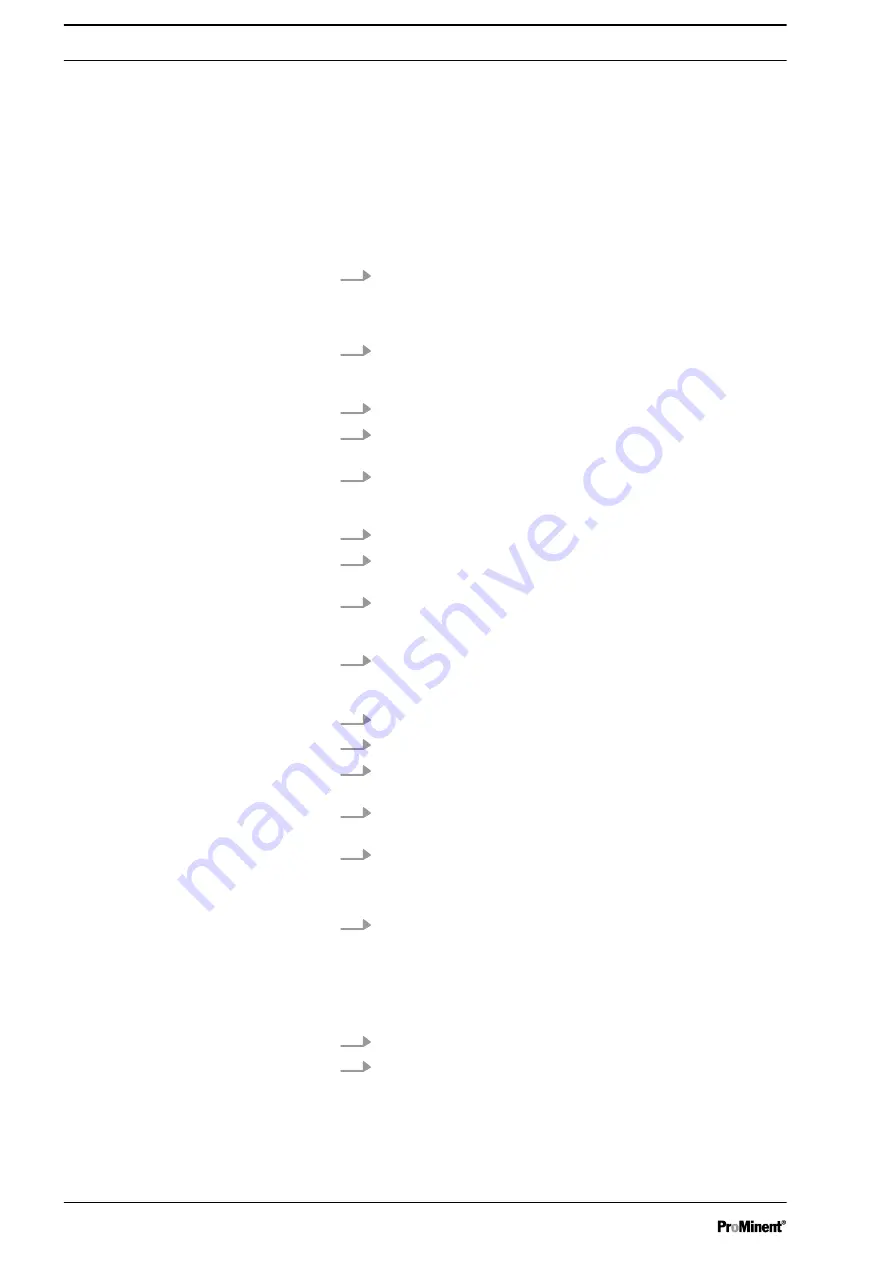
13.2 Replacing the diaphragm
A little feed chemical may have accumulated behind the diaphragm
in the backplate following a leak - depending on the design.
n
Take this feed chemical into consideration when planning a
repair if it is hazardous.
n
Take protective measures, if necessary.
n
Adhere to the material safety data sheet for the feed chemical.
n
Ensure that the system is at atmospheric pressure.
1.
Empty the liquid end (turn the liquid end upside down and
allow the feed chemical to run out; flush out with a suitable
medium; flush the liquid end thoroughly when using haz‐
ardous feed chemicals).
2.
Turn the stroke adjustment dial as far as the stop at 0%
stroke length when the pump is running (the drive axle is
then difficult to turn).
3.
Switch off the pump.
4.
Unscrew the hydraulic connectors from the discharge and
suction side.
5.
With PP types with vent valve: Firstly remove the vent valve
(grip), then lift off the cover of the liquid end with a screw‐
driver.
6.
Remove the screws (1).
7.
Loosen the dosing head (2) and the backplate (4) from the
pump housing (6) - but only loosen.
8.
Hold the pump housing (6) with one hand and clamp the dia‐
phragm (3) with the other hand between the dosing head (2)
and the backplate (4).
9.
Loosen the diaphragm (3) from the drive axle with a gentle
backwards turn of the dosing head (2), diaphragm (3) and
backplate (4) in an anticlockwise direction.
10. Fully unscrew the diaphragm (3) from the drive axle.
11. Remove the backplate (4) from the pump housing (6).
12. Check the condition of the safety diaphragm (5) and replace
if necessary.
13. Push the safety diaphragm (5) onto the drive axle only until it
lies flush with the pump housing (6) – and no further.
14. Tentatively screw the new diaphragm (3) onto the drive axle
as far as the stop.
ð
The diaphragm (3) is now sitting at the stop of the thread.
15. Should this not work, remove dirt or swarf from the thread
and correctly screw the diaphragm (3) onto the drive axle this
time.
INFORMATION: Ensure that the diaphragm is screwed
exactly onto the drive axle otherwise the pump will subse‐
quently not meter accurately!
16. Unscrew the diaphragm (3) again.
17. Place the backplate (4) onto the pump housing (6).
Leakage may become apparent at a later stage
n
Make sure that the leakage hole points downwards when
the pump is in its subsequent fitting position - please
refer to !
Repair
48
















































